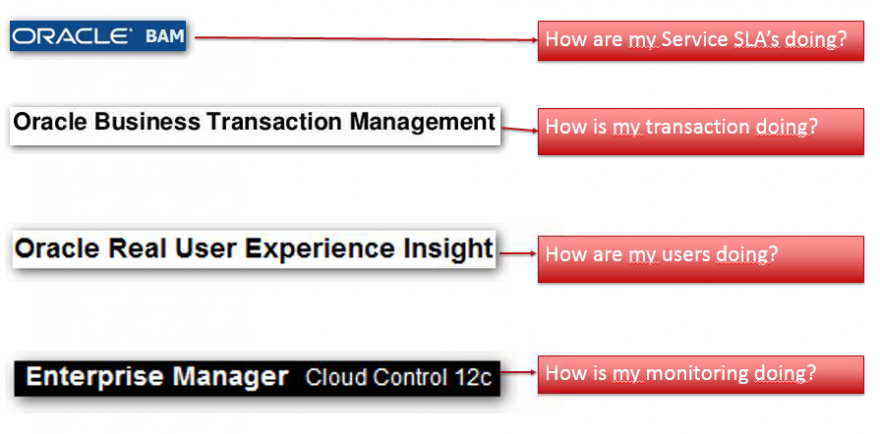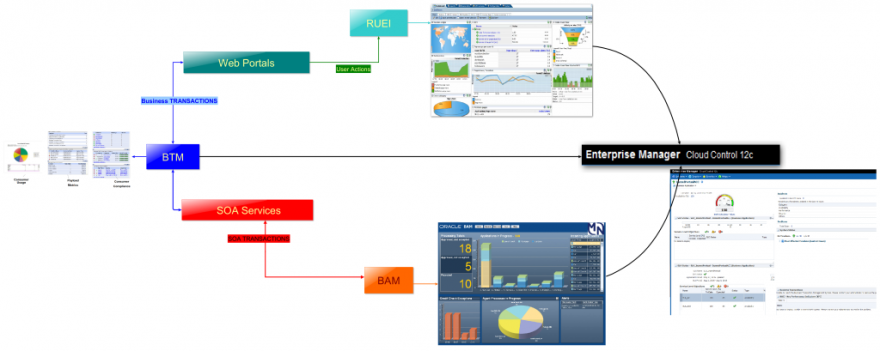Loosely coupled monitoring with Oracle (part 1)
Published on: Author: Michel Schildmeijer Category: OracleLoosely coupled, a term you might heard of; it is a term being used to explain how a Service Oriented Architecture handles with applications, services and transactions. Now, when the hype regarding Service Oriented Architecture has passed already for some years (Cloud is now the hype), many companies use the SOA Architecture concept to integrate their systems and applications.
Along the years, one could see that during projects main focus was always on delivering good quality software, but when it came to get into operational live, companies did not have a full answer regarding operational questions, such as how do I monitor such an architecture?
A good health?
Traditional IT monitoring usually aims on technical monitoring, such as “is the server alive” or ” is the database running”, which is good in the basics, but far not good enough. It does not say anything about the health of an application or application flow. Furthermore, in SOA Architectures, where lots of actions are processes and transaction based, it’s even tougher to identify the health of a transaction. Because it can pass so many stages and systems, it can be a puzzle to find out where it got stuck, in which “black hole” a message dissappeared into or got hung.
Furthermore, I encountered IT departments often do not know what their customers are really doing, behaving, what their wishes are, where they get stuck, and so on. So we need a totally different and revolutionairy view of how IT should implement monitoring.
Loosely coupled monitoring
That’s why I want to introduce the term “Loosely coupled monitoring”, or, how Oracle calls it, business driven monitoring. Basically it means that monitoring will not be initiated by technical people, but through all kinds of sensors, business indicators and probes which collects all kinds of data of how users and processes are doing.
To build “Loosely coupled ” or “Business Driven” application monitoring you need the following four Oracle technologies:

BAM, BTM and RUEI all the 3 are to my opinion key components in order to build an end 2 end business monitoring including all technical systems too. Finally, Enterprise Manager 12c CloudControl is the magic glue to combine all these tools into one operational set of dashboards, alerts, thresholds and notifications.
A complete setup using these components could look like this:

Oracle BAM
Oracle BAM was acquired by Oracle during 2006 and have been enriched with AquaLogic BPM BAM functionalities, and have been integrated as a product in the SOA /BPM Suite. In the beginning BAM was a standalone product which only was running on windows but since the 11g suite it is fully part of the SOA Suite. It can be configured optionally in your SOA Suite domain, added later or have a separate BAM only domain if you want to have a centralized unit for all you SOA domains.
Main features of BAM are:
- Business Dashboards
- Business Metrics Realtime
- SLA / KPI monitoring
- Process Analytics
KPI visualization is a strong point of BAM, to visualize if your business processes still meet their SLA’s. These dashboards are well suited for delivering to business people.
An example use case for implementing BAM could be the following:
- Create <Business Action> Data Object to connect with BPEL Sensor data in BAM Architect.
- Create BAM KPI Dashboards & Reports in BAM Studio.
- Configure BAM Adapter in WebLogic.
- Create BPEL Sensor Activity and Sensor Action in JDeveloper. Sensors can be:
- Activity Sensors to monitor BPEL Execute activity like invoke actions.
- Variable Sensors to monitor in and output data from BPEL.
- Fault sensors to monitor BPEL faults.
Besides of delivering dashboards for business users, you could also implement BAM alerts into your Enterprise Manager 12c Cloud Control by using Data Exchange Connector. With customized rules you could send notifications to the proper business teams.
Does you business definitely need this business driven monitoring solution, and do you want to know more about it? Please feel free to contact me on mschildmeijer@qualogy.com or one of my other communication channels.
Next version I will discuss the implementation of Oracle BTM, Business Transaction Monitoring.




